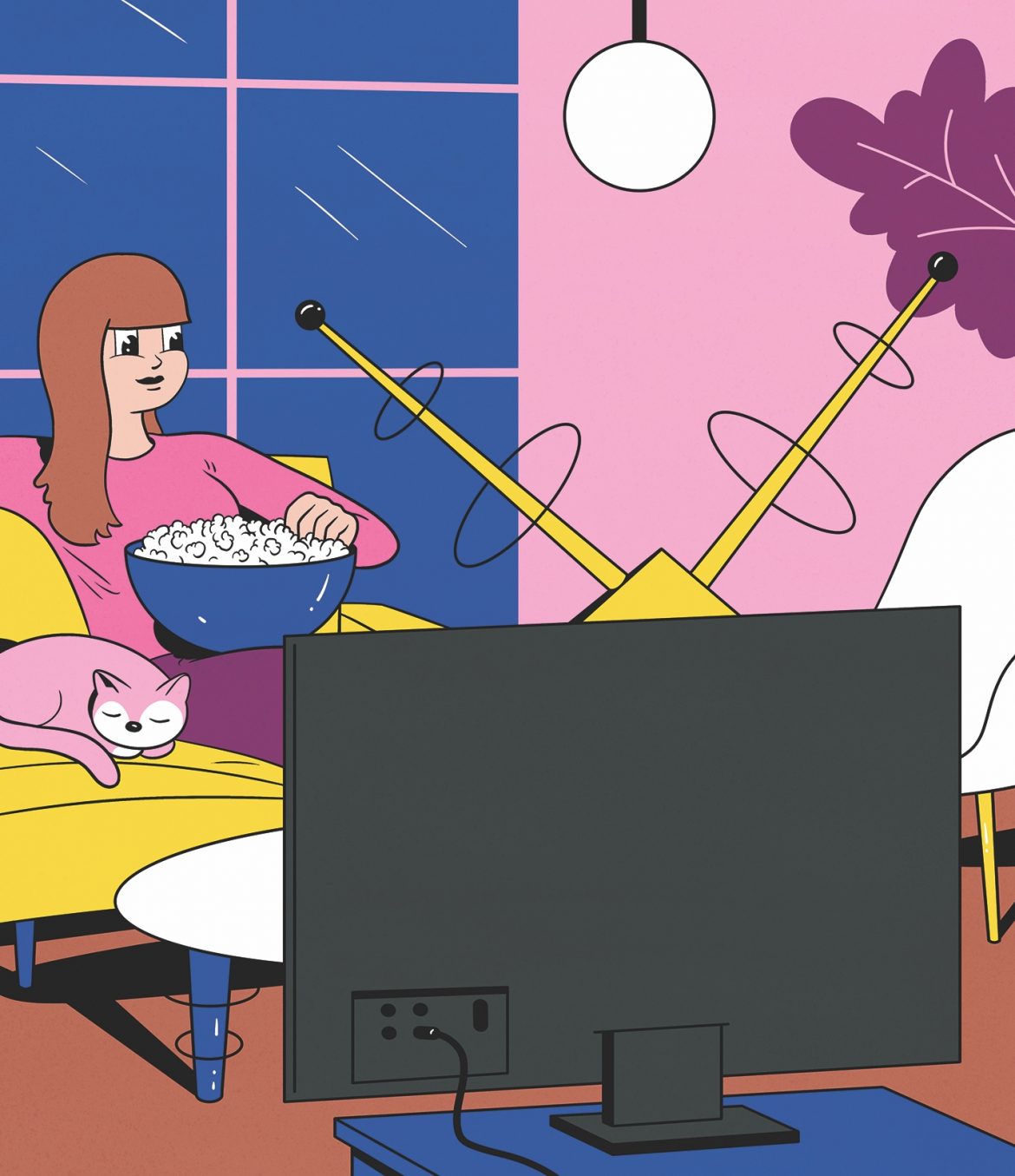Rabbit ear TV antennas harken back to a time when you and your family watched game shows or the evening news together, adjusting that pesky “technology” whenever things got a little static-y. So it’s probably the last thing your HD smart streaming TV needs now to connect with your favorite shows, right? Actually, the indoor antenna is making a comeback, says Amanda Brown, vice president of consumer strategy and insights at E.W. Scripps Co. “It’s retro but becoming modern,” she says of the company’s Free TV Project.
Scripps launched Free TV to explain how a simple piece of updated technology can allow free access to more than 30 channels, including HD and live sports, local and national news, comedies, special events, essential local weather updates, and family programming. Brown says she has access to 57 channels through her antenna at her Anderson Township home; typing in area Zip codes on the Free TV website shows that Covington residents might have 49 channels and Lebanon residents 67.
The unwelcomed static of past years is long gone, Brown says, and you can expect significant changes since the last time you used an antenna. “The broadcast technology that allows you to receive the channel has made vast improvements since I was a kid,” she says. A new broadcast technology called ATSC 3.0 is making its way across the U.S. as well, with even better HD broadcast signals. More than 40 million U.S. households (one in three) currently have an antenna, according to the Consumer Technology Association, and more than 50 million are expected to have one by 2025.
Scripps, which owns 61 television stations nationwide and networks like Court TV and Newsy, isn’t necessarily asking consumers to delete all of their streaming apps for an antenna. Instead, Brown recommends “self-bundling” for many people. “They’re mixing and matching their media, mostly on the TV side, so it’s a combination of people who have cable and free over-the-air TV, plus streaming,” she says, adding that most Free TV Project users so far combine methods. The antenna will help eliminate paid channels they you get for free.
They can also add an antenna to supplemental televisions in additional rooms, says Brown. A consumer might like to watch the evening news in the kitchen while he or she cooks, for example, but doesn’t want to pay for an extra streaming setup or cable link there.
One of the last remaining drawbacks for consumers hoping to cut cable is their access to professional sports events. If you want to see the Bengals dominate each week this season, you’re likely in luck with over-the-air TV. But for those wanting to watch other national sports coverage, you might be stuck with cable or a streaming service for a while longer. “The access to sports has become more complicated,” Brown says, pointing to rights negotiations with sports organizations. “But a general consumer who wants access to fall sports on networks like NBC and CBS can get them with a digital antenna.”



